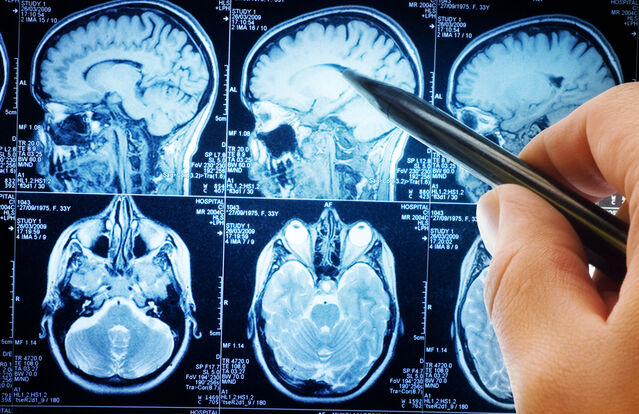ADHD
7 Ways ADHD Can Be Seen in the Brain
In the amygdala, the cerebellum, and elsewhere.
Posted December 31, 2021 Reviewed by Devon Frye

There are few things more infuriating to mental health professionals than hearing "ADHD is not real." Yes, even today, there are still critics, cynics, criticizers, and non-believers vying for the opportunity to disprove the diagnosis.
Do I personally believe that the DSM-5 does a great job of outlining the criteria for the diagnosis? Not by a long shot. Do we need more research to help rule out other disorders that overlap with ADHD symptoms? 100 percent. Does the disorder perhaps even need a different name entirely? Absolutely. (ADHD individuals tend to have no issue focusing on the activities and experiences that they enjoy, hence hyperfocus—which the DSM does not even acknowledge—which I argue is grounds for a new name in and of itself.)
ADHD is not a disorder of attention deficit; instead, it is a disorder of regulating attention and emotions due to structural and functional differences in the brain and neural networks. I suspect that the doubt and suspicion of the disorder stem from the belief that ADHD is categorized by a single deficit (again, I blame the name) rather than categorized dimensionally. ADHD is not a disorder of ability but performance due to neuroanatomical differences.
Regardless, it's time that ADHD be recognized for what it is: a neurodevelopmental disorder, not a myth, nor a result of poor parenting. Below I will outline structures of the brain that are different in volume and shape and how those differences are thought to be linked to behaviors associated with ADHD. The ADHD brain is structurally and functionally distinct, and hopefully, the evidence below will keep the naysayers quiet... for now.
How the ADHD Brain is Different
A 2017 MRI imaging study found that overall brain volume and brain volume in six of the seven brain structures listed below were smaller in people with an ADHD diagnosis. Multiple studies have validated significant brain developmental delay and 3-5 percent smaller whole brain volume in individuals with ADHD compared to neurotypical brains.
Please note that "smaller" does not equate to "less intelligent." We do not need to perpetuate stigma and misinformation further. Bigger does not translate to "better" in this case.
As Craig Surman, the Professional Advisory Board Co-Chair for the organization Children and Adults with Attention-Deficit/Hyperactivity Disorder (CHADD) said in an interview about the results of the study, "It may be that these regions are used less in people with ADHD. Or that they are smaller because they are organized differently, or because the supporting tissue is different."
- Caudate nucleus. The caudate is associated with goal-directed behavior and motivation. As such, smaller volume and asymmetry of the brain structure that help make up part of the basal ganglia could be associated with difficulty getting started on tasks, planning movement, and sustaining momentum toward accomplishing goals, which are defining impairments related to ADHD.
- Putamen. The putamen is associated with learning and motor control, including speech articulation. The lack of volume may be responsible for symptoms of ADHD related to deficits in tasks related to fine motor skills such as handwriting, coordination, and or clumsiness. In his interview, Surman stated, "the caudate and the putamen work together and act as the gateway for motor activity. Disorders of these regions can result in hyperactivity of the motor system, a common symptom of ADHD." It may also be responsible for the frequent co-occurrence of apraxia and ADHD. Apraxia is a motor speech disorder that results in difficulty speaking.
- Nucleus accumbens. Smaller nucleus accumbens may be associated with motivated behavior, reward information, and emotional problems in ADHD via its function in reward processing. Variations in the nucleus accumbens could give us insight into one of ADHD's most impairing features: lack of motivation. Individuals with ADHD are often unnecessarily and unfairly portrayed and stigmatized as "lazy," "unmotivated," and even "indifferent," when in reality, their brains are structurally different.
- Amygdala. The amygdala, one of the oldest parts of the brain, was also found to be smaller in study participants with ADHD. The amygdala is often associated with experiencing emotions, specifically fear and aggression, including detecting threats and activating appropriate fear-related behaviors. Emotional dysregulation, another deficit in executive functioning central to ADHD, is characterized by emotional lability or quick and exaggerated changes in mood, which could be caused by variations in the amygdala resulting in the lack of emotional regulation.
- Cerebellum. The cerebellum is associated with the coordination of motor movements balance control, gait, posture, muscle tone, and voluntary muscle activity. Damage to this area in humans results in a loss in the ability to control fine movements, maintain posture, and motor learning. A 2017 study found that children with ADHD had significantly smaller cerebellar volumes. This structural difference could help account for the fine motor delays often seen in ADHD, i.e., using a pencil or grasping a spoon. It could also be responsible for dyspraxia, a developmental coordination disorder, which can co-occur with ADHD.
- Prefrontal cortex. The prefrontal cortex (PFC) is related to self-awareness, decision-making, judgment, insight, empathy, and the ability to self-regulate emotion and behavior. Studies have found that ADHD is associated with weaker function in the PFC, thinner PFC, and different structure of the prefrontal cortex. This may help us account for the ADHD shortfalls in advantageous decision-making, planning for the future, time management, procrastination, poor social skills, difficulty in maintaining relationships, externalization behaviors such as disruptive, aggressive, and defiant behaviors, lack of impulse control, and disorganization.
- Hippocampus. The hippocampus in individuals with ADHD is larger, not smaller. This brain structure is associated with long-term memory and working memory. Working memory is the ability to hold on to information in your memory while performing other tasks, a skill often used when following instructions, concentrating, or memory that's needed in the present moment—for example, listing to directions while remembering an address, remembering the steps of a math problem while doing a math problem. A study conducted in 2006 found that children and adolescents with ADHD had larger hippocampal volumes than neurotypical children. Researchers concluded that the increase in hippocampal volume might be the brain's attempt to compensate for disruptions in time perception, the tendency to avoid waiting, and sensation-seeking behaviors associated with ADHD.
LinkedIn and Facebook image: Riderfoot/Shutterstock


